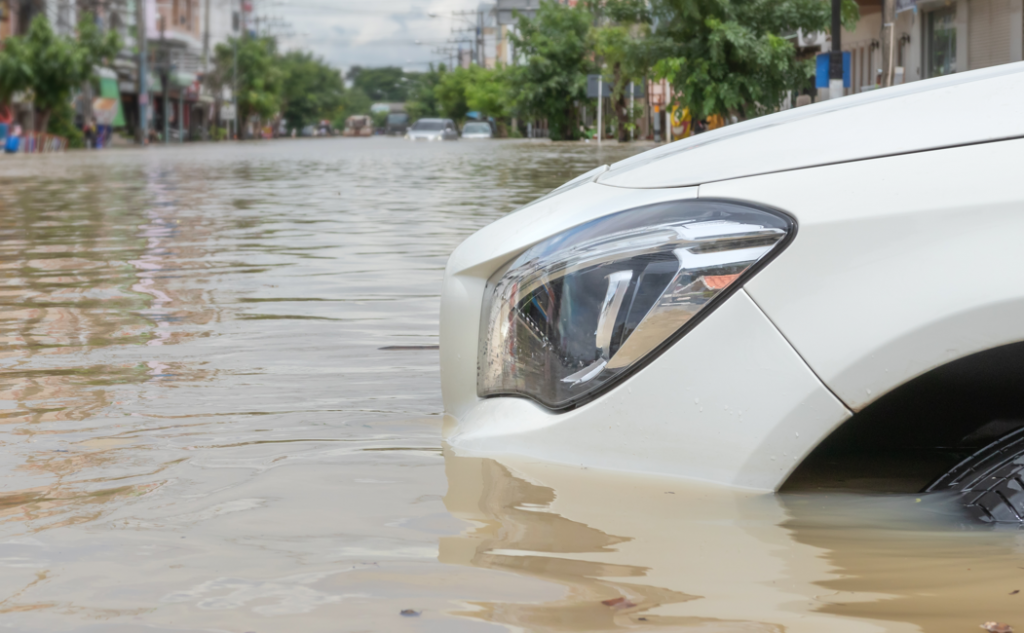
AAA warns motorists to prepare for treacherous driving conditions after recent storms resulted in flash floods and stranded vehicles.
Turn Around, Don’t Drown
Even a few inches of swift-moving floodwater flowing over a roadway can sweep away a vehicle. With many creeks, culverts and rivers across Oklahoma recently at or above flood stage, drivers are at risk.
“Every year, people drive into water over flowing roads, and many quickly discover it was the wrong decision,” said AAA Oklahoma’s Mansuetti. “Driving into water without knowing how deep or swift it flows can be catastrophic and deadly. Bottom line: turn around, don’t drown.”
According to the National Highway Traffic Safety Administration, more than 1 million traffic accidents occur on wet pavement each year, resulting in more than 350,000 injuries and almost 4,500 fatalities. In order to avoid dangerous situations, AAA Oklahoma encourages drivers to brush up on their wet-weather driving techniques.
“Drivers can easily lose control of their vehicles during rainy conditions,” says AAA Oklahoma Public Affairs Manager, Rylie Mansuetti. “Roadways are the most dangerous during the first 10 minutes of a heavy downpour as existing oil and debris first rise to the road’s surface, then wash away. Knowing how to handle poor traction reduces the potential for hydroplaning, skidding or sliding off the road.”
Safety Starts Before You Drive
Before bad weather hits, prepare your car.
- Replace windshield wipers that leave streaks or do not clear the glass in a single swipe. Rubber inserts last 6-12 months, depending on heat, dirt, sunlight, acid rain and ozone. Streaking and chattering are common clues that rubber needs replacement.
- Make sure all headlights, taillights, brake lights and turn signals are properly functioning so other drivers will see you during downpours. Turn on your headlights whenever you need to use windshield wipers in the rain.
- Check tire tread depth. Insert a quarter upside down into a tire groove. If you can see George Washington’s head at any point, start shopping for replacement tires.
- Check tire pressure (including the spare) at least once a month when the tires are cold. Always follow the inflation pressure recommendations in your owner’s manual, or those on the tire information label located in the glove box or on the driver’s doorjamb. Do not use the tire sidewall’s inflation pressure. Uneven or excessive tire tread wear may indicate the need for suspension repair or wheel alignment. Both will extend tire life.
Avoid Cruise Control
Using cruise control in wet conditions increases the chances of losing vehicle control. To prevent loss of traction, the driver may need to reduce the car’s speed by easing off the accelerator. This cannot happen when cruise control is on.
The key to driving safely in rainy weather is to concentrate on every aspect of driving. Avoiding distractions is essential.
Slow Down and Leave Room
Slowing down during wet-weather driving can reduce hydroplaning. Drivers should slow down and avoid hard braking or sharp turning, and drive in the tracks of the vehicle ahead. With as little as 1/12 inch of water on the road, tires have to displace a gallon of water per second. This is to keep the rubber from meeting the road.
If there is a lot of water on the roadway, drivers should reduce their speed accordingly. At speeds as low as 35 mph, newly installed tires can still lose contact with the roadway.
Drivers should allow ample stopping distance between cars by increasing the following distance of the vehicle in front of them. In addition, they should slow down early at intersections, turns and other traffic.
Responding to a Skid
Even careful drivers can experience hydroplaning or skidding. If a driver feels the car skid, it is critical to not panic and follow these basic steps:
Continue to look and steer in the direction you want the car to move.
Avoid slamming on the brakes, as this will further upset the vehicle’s balance and make it harder to control.















